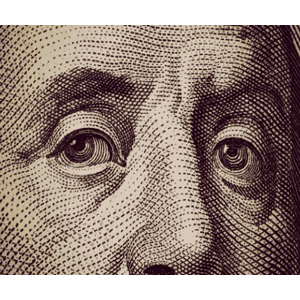 US Dollar Hits 5 Month Low: The US Dollar hit its lowest price in 5 months overnight. The Enigma That Is Yellen Continues: Yesterday Janet Yellen, the head of the Federal Reserve gave a speech in which she presented the markets with a riddle; a riddle that could potentially have many answers. GDP Boosts U.S Economic Sentiment: “It’s really U.S. consumers who are powering the global economy forward at this point,” said Gus Faucher, an economist at PNC Financial Services Group Inc. in Pittsburgh.
US Dollar Hits 5 Month Low: The US Dollar hit its lowest price in 5 months overnight. The Enigma That Is Yellen Continues: Yesterday Janet Yellen, the head of the Federal Reserve gave a speech in which she presented the markets with a riddle; a riddle that could potentially have many answers. GDP Boosts U.S Economic Sentiment: “It’s really U.S. consumers who are powering the global economy forward at this point,” said Gus Faucher, an economist at PNC Financial Services Group Inc. in Pittsburgh.
US Dollar Hits 5 Month Low #TradeSmart![]()
31.03.2016 The US Dollar hit its lowest price in 5 months overnight, as the market continued to price in even less chance that the Fed hikes in the near term. I am a little surprised at this run, as I thought the risk was skewed greater to the upside in USD. With the Fed as wishy-washy as they are, I still think this could be too much, and setup for the mother of all USD rallies when they ‘surprise us’, but that’s well and truly putting the kart before the horse now, with markets pricing in just a 21% chance of a hike priced in for June and a 55% chance for 2016 at all. Last night’s notoriously unreliable ADP, the reading was basically in line with expectations and therefore didn’t get markets too excited. “USD ADP Non-Farm Employment Change (200K v 195K expected and 205K (revised down 9K) previous)” The 200K jobs added in the private sector was all but in line with expectations and the 9K downward revision from the previous month again really nothing to write home about when the ADP is so infamous as an indicator for Friday’s NFP: “USD Non-Farm Employment Change (206K expected and 242K previous)” All this US Dollar weakness gave the Euro and Kiwi the biggest boost, thanks to the hunt for yield/stability and better than expected economic data respectively.
The Enigma That Is Yellen Continues… #TradeSmart![]()
30.03.2016 Making sense of a central bank’s rhetoric is somewhat like solving a riddle; we hear one thing but must look for clues in order to solve the puzzle. Yesterday Janet Yellen, the head of the Federal Reserve gave a speech entitled “Economic Outlook and Monetary Policy”. She mentioned many things she had already gone over time and time again, however was incredibly careful in any new terminology or projections the Fed had. She essentially presented the markets with a riddle; a riddle that could potentially have many answers. Here are some important extracts: “I consider it appropriate for the committee to proceed cautiously in adjusting policy.” “Reflecting global economic and financial developments since December, however, the pace of rate increases is now expected to be somewhat slower.” Off the back of her speech the U.S dollar took a dive lower, as she renewed the dovish side of the Fed. This of course then left the S&P 500 to rally, pushing above 2050 to close around current levels at 2060. Words like: ‘cautious’ and ‘slower’ were both frequently used and can be specifically highlighted when you read the transcript. The dovish tone however, was also slightly tarnished during the Q&A session when Yellen went on to say that the US economy has proven to be ‘resilient’; a word that you could highlight in a different colour due to it standing out against the doom and gloominess of the speech in its entirety.
29.03.2016 In the fourth quarter the U.S. economy grew at a faster pace than previously estimated. It was predominantly led by a stronger household spending that has helped cushion the expansion from weakness overseas. The revised 1.4 percent increase in GDP (the combined value of all goods and services produced), compares with the Commerce Department’s previous estimate of 1 percent, according to figures issued Friday. The economy grew 2 percent in the third quarter. The report also brought on some bad news, showing that corporate profits dropped in 2015 by the most in seven years. The earnings slump illustrates the limits of an economy struggling to gather steam at the start of 2016. Some companies, encumbered by low commodities prices and sluggish foreign markets, are cutting back on investment while a firm labor market and low inflation encourage households to keep shopping. “It’s really U.S. consumers who are powering the global economy forward at this point,” said Gus Faucher, an economist at PNC Financial Services Group Inc. in Pittsburgh. At the same time, “there are pressures on businesses in terms of the stronger dollar, rising labor costs and slowing productivity growth” even as a rise in energy prices will help ease that drag for oil producers. The median forecast of 73 economists surveyed by Bloomberg called for fourth-quarter growth of 1 percent, with projections ranging from no change to a 1.4 percent gain. This is the last of three estimates for the quarter before annual revisions in July.
